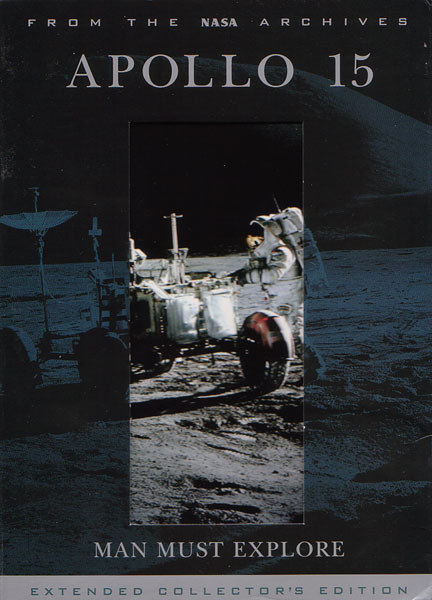


Prior to Christmas I discovered on Amazon.com several DVD sets of each Apollo lunar mission released on six (or less) disks per set which present the complete TV transmissions, onboard 16mm film, and select audio transmissions from pre-launch to mission review. Produced by Spacecraft Films in 2005, the material has been pulled from the preserved masters and enhanced with the latest restoration techniques. (The image above shows one of these DVD sets).
This represents typically twenty or more hours of pure Apollo for each mission... no Tang commercials, no voiceovers or interruptions by journalists, no commentary at all—excellent!
As great as it is to see these historic missions one has to remember the video is from 1960/70 vintage stock. A few (perhaps young) reviewers on Amazon lamented that there “wasn’t much action” or the views were fuzzy, yikes! The television was state of the art for its time, the prototype for all home video cameras to come, and the astronauts would only occasionally break from their NASA-induced serious demeanor to have some fun. They were kept busy by an overwhelming timeline. For an Apollo junky like me, it was an elixir. I felt myself pulled back to the time when I starved for as much as the meddling networks would show. Here, we see it ALL, unfiltered! And, yes, the astronauts even occasionally cursed when an experiment wasn’t going just right or the terrain was a bit too rough. Who knew?
The TV transmissions from the last three landings were mainly those remotely controlled via the lunar rover from NASA in Houston. I happen to have “Apollo 15: Man Must Explore” and “Apollo 16: Journey to Descartes.”
The difference between the two missions is interesting not just because of the nature of the crews or the landing sites but the sense that NASA gained experience with each mission in what to show via TV, how to use the remote camera, and where they aimed. As one would expect in Apollo there is a distinct improvement in both quality and coverage from A15 to A16. I can’t wait to get my Apollo 17 set which is on backorder as I type, argh!
The beauty of modern technology is the fact you can fast forward or rewind to any spot, any point of interest, almost as if you are controlling the camera yourself. Several scenes, especially the Saturn V launches, employ the “select angle” feature which gives you multiple camera views of the same event, as many as 8 different views at times. I’m sure my neighbor is wondering why it sometime sounds like a Saturn V is taking off every two minutes in my condo. The sound shakes the building. The lunar EVA’s are indexed by station or stop along the astronauts’ busy journeys on the surface. I delighted in seeing them toss equipment packaging off into the distance in the low gravity or ponder a rock that had been sitting undisturbed for billions of years. This is “must see TV.” I heartily recommend that these video journals find their way onto any science lover’s bookshelf, to be watched when the urge strikes. I can’t wait until we return to the moon once again using today’s video technology. I’ll be in the front row, popcorn in hand, ready to soak up some more!
(The day after Norbert sent me this article, he e-mailed the following:)
I went upstairs here at work this morning and found my backordered DVD set for Apollo 17 had arrived. Over lunch I excitedly zipped through several of the DVD’s, yet another 6 of them, smartly packaged in a thinner more streamlined case, and with excellent pictures on each disk and the booklet. As expected, the video is of even higher quality than Apollos 15 and 16 showing in far more detail than those missions just how rugged and jumbled the surface of the moon is. The night launch angles are excellent, and right from the first EVA with flag deployment you can really see how much Apollo TV had improved by December 1972. The crew of Gene Cernan and Harrison “Jack” Schmidt are the most animated and gleeful of them all, and Jack’s scientific/geological background truly shows through in his descriptions of the surface. Watching Cernan’s high step gait while singing “hippity hoppity, hippity hoppity” is a real hoot. This will be fun to watch when I can sit back and sift through it all....
Norbert